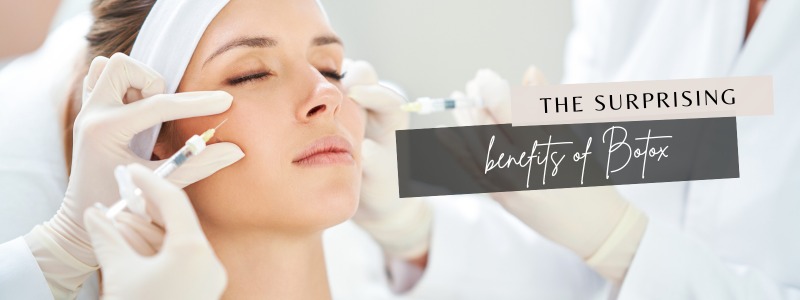Botox, the name that has become synonymous with anti-aging, has built a formidable reputation in the world of cosmetics. Its primary claim to fame is its ability to smooth out wrinkles and provide a youthful, radiant complexion. However, to think of Botox solely as a beauty treatment would be to underestimate
its wide-ranging capabilities. From treating chronic migraines to alleviating excessive sweating, the benefits of Botox extend far beyond simple wrinkle reduction. Let’s delve deeper into the lesser-known yet highly significant effects of Botox, and shed light on its multifaceted potential.
- Chronic Migraine Relief: A Light at the End of the Tunnel
For those enduring chronic migraines, each day can be an uphill battle. The debilitating pain can disrupt daily activities, putting life on hold. In a groundbreaking development, the FDA approved the use of Botox for treating chronic migraines. With injections applied around the head and neck every 12 weeks, Botox can help reduce the frequency of these agonizing headaches, providing relief that can last for months. For chronic migraine sufferers, Botox can be a ray of hope, a beacon guiding them towards a more pain-free life.
- Hyperhidrosis Treatment: A Fresh Approach to a Discomforting Condition
Hyperhidrosis, characterized by excessive sweating, is a condition that can cause significant physical discomfort and social embarrassment. Botox emerges as a potent solution in this context. By blocking the nerves responsible for activating sweat glands, Botox can dramatically cut down sweating in problematic areas such as underarms, hands, and feet, bringing a newfound sense of comfort and confidence.
- Muscle Spasm Control: Restoring Normalcy
Interestingly, the initial FDA approval for Botox was not for cosmetic purposes but for treating strabismus (crossed eyes) and blepharospasm (uncontrolled blinking). Botox works by obstructing nerve signals that trigger muscle contractions, thereby reducing abnormal muscle tension and spasms. This principle is also applied to managing conditions such as Bell’s Palsy and spasmodic dysphonia, bringing stability and normalcy back to the lives of those affected.
- Overactive Bladder Management: Regaining Control
An overactive bladder can be significantly disruptive, leading to a frequent urge to urinate and potentially even urinary incontinence. By injecting Botox into the bladder muscle, the intensity of these symptoms can be dramatically reduced, allowing patients to regain control over their lives.
- TMJ Disorders: Alleviating Pain and Tension
Temporomandibular Joint (TMJ) disorders result in pain in the jaw joint and the muscles that control jaw movement, affecting speech, eating, and overall quality of life. Botox injections can help by reducing muscle tension, thus easing the associated pain and offering much-needed relief to TMJ sufferers.
Given its widespread applications, Botox presents itself as much more than a mere cosmetic treatment. However, like all medical treatments, it’s crucial to remember that Botox should be administered by qualified professionals. Patients should fully discuss their medical history, potential risks, and side effects with their healthcare provider before starting treatment.
In conclusion, Botox is a versatile powerhouse medication with applications spanning far beyond its popular role in cosmetic enhancement. From its potent effects in chronic migraine relief to its capabilities in hyperhidrosis and TMJ disorder treatment, Botox offers a broader perspective on health and wellness. The next time you hear the word “Botox,” let it remind you of not just a beauty treatment but a therapeutic tool that can dramatically improve the life quality for many. Botox: it’s more than skin deep; it’s a testament to medical advancement and its potential to enhance lives.







Leave A Comment